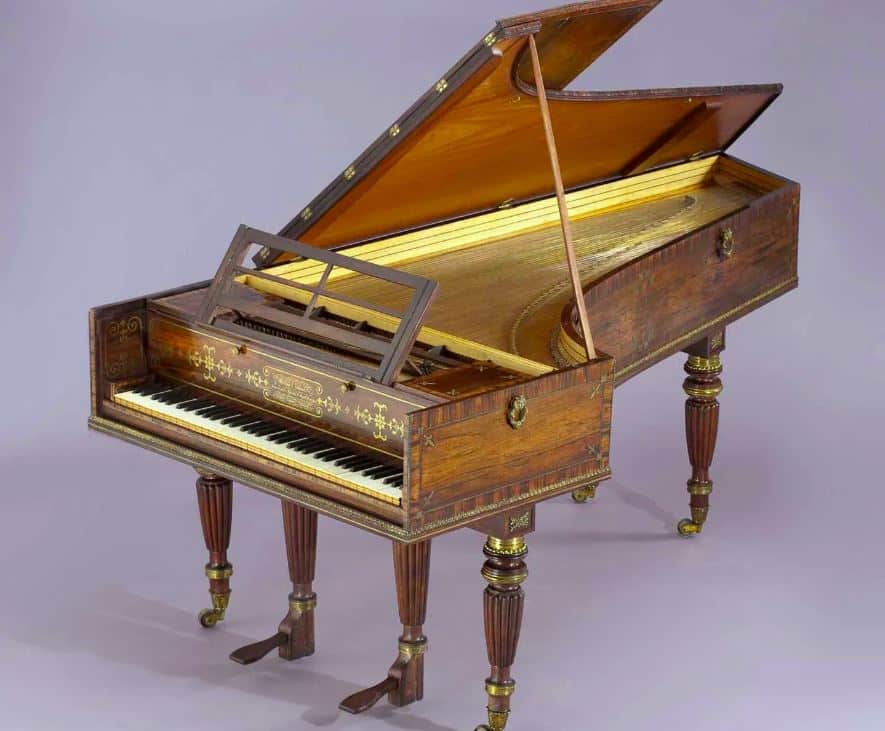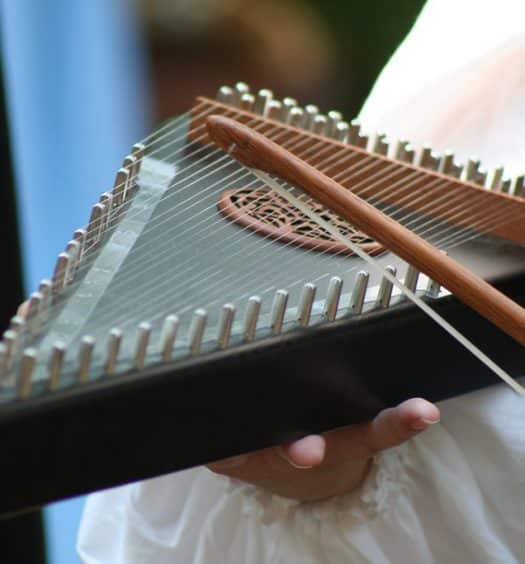The dulcimer and the harpsichord are both musical instruments, but they belong to different families and have distinct characteristics. While they share some similarities, they both have very distinct characteristics and playing techniques that set them apart. In this article, we’ll take a quick look at the dulcimer vs harpsichord.
Dulcimer vs Harpsichord – An Introduction
When we talk about dulcimers, two styles generally come to mind. The first style is the Appalachian or “mountain” dulcimer which is often played on the lap. This is traditionally a narrowly-shaped, fretted acoustic instrument with strings that are strummed to produce sound – either with fingers or with a pick (or “plectrum”). Sometimes a noter is used to hold down the melody strings while playing.
The second style is the hammered dulcimer, which is a multi-stringed acoustic instrument whose strings are struck with small hammers. The hammered dulcimer is typically trapezoidal in shape and played on a solid surface or table. Both styles produce the “sweet” dulcet sounds that are characteristic of dulcimers.
While there are other less played varieties of dulcimer instruments, including the dulcimer guitar, the stick dulcimer, the banjo dulcimer, and the resonator dulcimers, the most popular styles today are the mountain and hammered dulcimers.
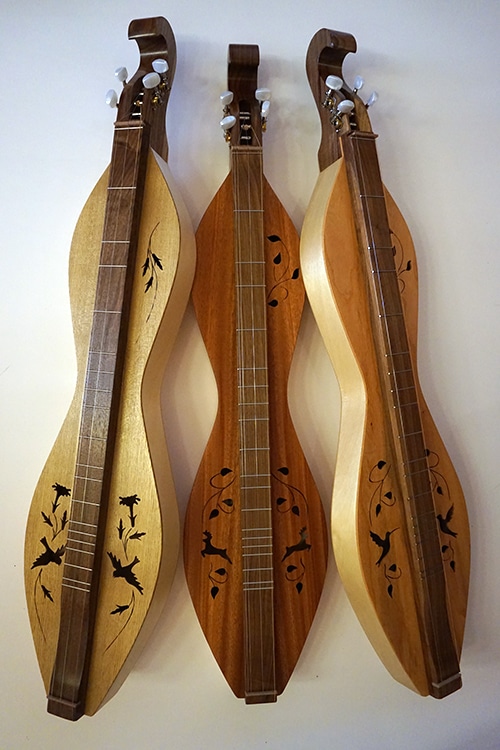
Source: cedarcreekdulcimers.com
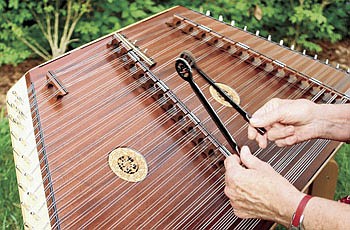
Family and Construction
When comparing the dulcimer vs harpsichord, let’s first start off with their family and construction.
The dulcimer is an acoustic stringed instrument that typically consists of a trapezoidal or hourglass-shaped soundboard made of wood. The strings are stretched over the soundboard and can be struck with hammers or mallets (hammered dulcimer) or plucked/strummed with the fingers or a pick (mountain dulcimer). The soundboard’s shape and the playing technique differentiate the hammered and mountain dulcimers.
The harpsichord, on the other hand, is a keyboard instrument similar to a piano. It has a rectangular wooden case with a set of strings. Unlike the piano, which uses hammers to strike the strings, the harpsichord strings are plucked by a mechanism called a “plectrum.” The keys of the harpsichord are connected to the plectra, which pluck the strings when the keys are pressed.
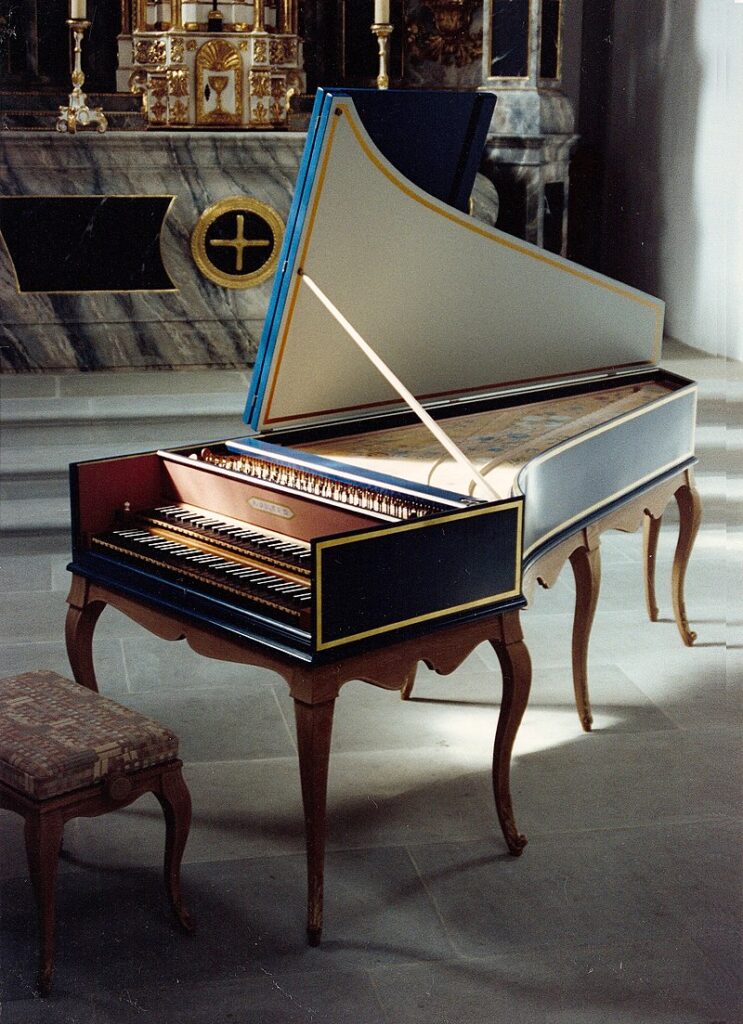
Playing Technique and Sound Production
When in comes to the dulcimer vs harpsichord, there are many notable differences in terms of playing technique.
Playing the dulcimer involves striking or plucking the strings to produce sound. In the hammered dulcimer, the player uses small hammers or mallets to strike the strings, allowing for a percussive and melodic effect. In the mountain dulcimer, the strings are plucked or strummed with the fingers or a pick, enabling both melody and accompaniment. The dulcimer’s sound is resonated through its soundboard.
Playing the harpsichord involves pressing the keys on the keyboard, which activates the plectra mechanism. When a key is pressed, the plectrum plucks the corresponding string, producing sound. The harpsichord allows for different dynamic levels based on how forcefully the keys are pressed, but it does not have the same level of expressive control as a piano. The harpsichord’s sound is resonated through its strings and the wooden case.
Musical Styles and Repertoire
In terms of musical style and repertoire, there are distinct differences when comparing the dulcimer vs harpsichord.
The dulcimer is commonly associated with folk and traditional music, particularly in the Appalachian region of the United States. It has a distinctive sound that lends itself well to playing traditional tunes and creating a melodic and rhythmic foundation. However, the dulcimer has also been adapted to contemporary genres, including folk-rock and world music.
The harpsichord has a rich history and is associated primarily with Baroque music, particularly compositions by composers such as Bach, Handel, and Scarlatti. It was the primary keyboard instrument of the Baroque period before the piano became popular. The harpsichord’s sound and characteristics suit the complex contrapuntal textures and ornamentation of Baroque music.
Dynamic Range
When comparing the dulcimer vs harpsichord, there are also distinct differences in sound production and range.
One of the significant differences between the dulcimer and the harpsichord is the dynamic range and expressiveness they offer. The dulcimer’s sound is generally limited in terms of dynamics, as it relies on striking or plucking the strings, resulting in a more fixed volume level. While different techniques can create variations in volume and articulation, the dulcimer is generally not as versatile in terms of dynamic expression.
The harpsichord, while also not as dynamic as a piano, offers more control over dynamics compared to the dulcimer. The player can vary the intensity of the plucking mechanism by adjusting their touch on the keys. However, the harpsichord’s lack of a sustained or gradual dynamic range means that it excels in producing distinct and articulated sounds.
It’s also interesting to note that the largest harpsichords have a range of about five octaves, while the smallest have a range of under four octaves.
Final Words: Dulcimer vs Harpsichord
The dulcimer and the harpsichord are both unique instruments with an interesting history, and which are enjoying a bit of a renaissance. While they share some similarities, they both have very distinct characteristics. In this article, we touched on some of the key areas that set them apart.
Hopefully this comparison of the dulcimer vs harpsichord was useful – drop us a line if there are additional areas you’d like us to highlight.

